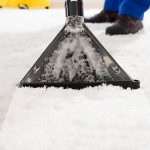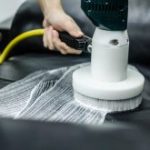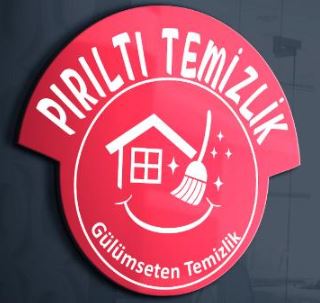The constant growth of the hoof creates a dynamic relationship between the digital axis and dorsal hoof wall, which suggests that completely straight hoofpastern axes cannot exist over time without natural wear or appropriate trimming (Moleman et al., 2006). However, (such) a horse may have conformational characteristics that are able to be trained for maximum locomotor efficiency, such as the ability to move with impulsion from behind, raise its withers, and engage its core. Then, stand back and look at the whole picturethe entire horsenot just the offset knee or base-narrow stance or turned-out toes, says Collatos. The walk and trot should be checked both under saddle and in hand. The segment lengths of specific long bones of limbs should also be noted at this time. Ideally, when viewed from the side, you should be able to draw a straight line through the center of the bones of the forearm, knee, cannon and bulb of the heel. Width of head and third metacarpal/metatarsalWidth of chest and pelvis From foal to adult, horses can develop all sorts of leg alignment issues like pigeon-toed, bow-legged or knock-kneed in the front legs, and cow-hocked, sickle-hocked in the hind legs and many more. This length should be about 1/3 of the body length. Question. Muscle fatigue diminishes this stabilization ability, allowing joints to move beyond their normal range of motion, she says, and potentially causing severe and acute damage to cartilage, bones, and soft tissue. She has also authored the books Go the Distance as a resource for endurance horse owners, Conformation and Performance, and First Aid for Horse and Rider in addition to many veterinary articles for both horse owner and professional audiences. A short back also provides more strength for carrying a rider. Conformation can, therefore, only be considered an indicator for future athletic potential. Smaller-Footed Horses. Extra ribs allow for a shorter back, which results in stronger coupling of the loin area. The veterinarian palpates the horse, checking muscles, joints, bones and tendons for evidence of pain, heat, swelling or any other physical abnormalities. A proportionate horse is usually square. However, certain conformational faults such as extreme tarsal angulation (large or small) and tarsal valgus are almost certainly predisposing to injury or lameness in racing events and are best avoided. Introduction. A horse's conformation and structure can . Conformation will, therefore, partially dictate the relationship between form and function, thus modifying the potential for biomechanical efficiency, superior performance, musculoskeletal durability, and perhaps even longevity (Wallin et al., 2001). Twisting of fetlocks also predisposes to arthritis. The stance of the horse has been identified as a major source of error in conformation assessment, as small changes in limb placement and weight distribution can introduce significant variation in segmental alignment. In the growing horse, trimming and shoeing can have a huge influence on the growth and development of the bony column. However, training can help develop core strength and flexibility to markedly enhance a horse with less-than-ideal balance or limb conformation. Metacarpophalangeal valgus Some common terms describing conformational alignments are defined anatomically in Table 15-1 and illustrated in. The opposite of a ewe neck, with a pronounced curve on the topline, but still a conformation fault, as the horse will not go correctly and may hollow his back. A strong, well-placed hock makes a stronger, more efficient leg. Some have more arch to the neck and dish to the face, or have more "action" when traveling. A line dropped from the cranial aspect of the greater tubercle of the humerus (point of the shoulder) should bisect the forelimb in the cranial view. Related Dynamic conformation. Center of the anterior part of the greater trochanter of the femur, 3. They generally appear somewhat uphill in their balance, with a neck that comes relatively high out of the withers, a moderately sloped shoulder, and a very powerful sacrum and pelvis. Unit Mixte de Recherche de l'Institut National de la Recherche Agronomique et de l'Ecole Nationale Vtrinaire d'Alfort (UMR INRA-ENVA) de Biomcanique et Pathologie Locomotrice du Cheval, Maisons-Alfort, France. In the hindlimb, a plumb line dropped from the ischial tuberosity should touch the point of the calcaneous (prominent caudally in the tarsus or hock), follow the plantar metatarsal surface to the metatarsophalangeal joint (MTPJ or fetlock), and fall 7.5 to 10 cm (Ross, 2003) caudal to the heel in the lateral view. Conformation assessment should be a systematic and organized process incorporating a general overall observation of size, symmetry, musculature, posture, balance, and demeanor, followed by a more specific evaluation of conformational traits of the body, individual limbs, and feet. The literature presented in this chapter will follow the terminology appearing in the research papers. FIGURE 15-5 Illustrations of some common conformational defects of the hooves (see Table 15-1 for description). The ideal horse will probably grow and wear its feet down evenly because it will properly load its weight when it moves. Dynamic load distribution and landing patterns play an important role in equine orthopaedics. Illustrations of some common conformational defects of the hindlimbs (see Table 15-1 for description). At the walk, however, landing flat is normal. This evaluation may be regarded as the front line for judgments when selecting horses for specific intended tasks, including breeding selection. Measure back length from the middle of the withers to the point of hip. A line dropped from the cranial aspect of the greater tubercle of the humerus (point of the shoulder) should bisect the forelimb in the cranial view. The cannon bone in the foreleg should be shorter than that of the rear leg. Fatigue amplifies such busy limb motion, making the horse more likely to interfere (one foot hitting the other leg) in addition to adding impact more on one side of the hoof and limb than the other.. Dynamic conformation. A long hindquarter allows for increased range of extension and flexion. For example, a caudal deviation at the radiocarpal or metacarpal joint complex (knee) may be described as back at the knee, calf knee, or carpal hyperextension, none of which describes the precise origin of segmental misalignment. Transition between the proximal and the middle thirds of the lateral collateral ligament of the elbow There are three areas of a horse's body that contribute to his balance and allow him to look cohesive. A line dropped from the cranial aspect of the greater tubercle of the humerus (point of the shoulder) should bisect the forelimb in the cranial view. FIGURE 15-2 Illustrations of some common conformational defects of the hindlimbs (see Table 15-1 for description). NO, Horse breeding from planning through foal care, Horse-health-problem risk factors, prevention, diagnosis, and treatment, Design and maintain a healthy horse operation, Prevention and treatment for problems of the equine foot, How to care for the basic health needs of horses, Prevention, diagnosis, and treatment of leg lameness, Proper feeding practices for foals, adult horses, and older horses, All aspects of caring for performance horses, News and issues for equine health professionals, Discussions about the welfare of our equine friends, When considering conformation, Chrysann Collatos, VMD, PhD, Dipl. It is proposed that such a system of static conformation assessment, in conjunction with a similar system for dynamic linear assessment, would provide useful quantitative selection criteria in the description and breeding of horses. Front Leg Conformation. Anatomic Description Straight behind The conformation or inherent anatomic structure of the horse is an integral part of the equine musculoskeletal constitution and will influence the quality of dynamic performance. Large formed hocks are better at absorbing concussion and generally make for a sounder joint. What movement defect is this due to bad conformation? Use this figure for Questions below. However, this requires expensive equipment, has the health and safety implications of possible radiation exposure to personnel involved, and is very sensitive to subject positioning (Barr, 1994; White et al., 2008). Judging and Conformation of Horses By: Carey Williams, Ph.D. - Rutgers University Graphics courtesy of: US Pony Club Manual of Horsemanship Book 1 Balance 1. A wide chest (from the front) allows for good stamina, endurance and lung capacity. Abnormal or crooked front legs can lead to lameness by putting stress on the following. Raising the heel with a wedge pad actually lowers the fetlock to result in serious negative effects on soft tissue dynamics within the foot, she says. In the hindlimb, a plumb line dropped from the ischial tuberosity should touch the point of the calcaneous (prominent caudally in the tarsus or hock), follow the plantar metatarsal surface to the metatarsophalangeal joint (MTPJ or fetlock), and fall 7.5 to 10 cm (Ross, 2003) caudal to the heel in the lateral view. When an owner complains about tripping, subtle or inconsistent forelimb lameness, or difficulty in transitions, cervical arthritis is on my list of potential differentials., Collatos says she tends to avoid a low-set neck conformation for upper-level dressage or show jumping prospects. The ideal conformation of a young horse for any competition or sound family mount. And, armed with that knowledge, you can take steps to help keep him sound. . Proximal end of the tuber coxae The set of the neck relative to the shoulder is significantly more important than the length of the neck., Duberstein stresses, Balance and structural correctness have always been two main criteria in judging a horses conformation, and probably for good reason. A horse should have well-formed withers where the shoulder can attach to the rest of the body. A founding study by Magnussen (1985) described the comprehensive set of landmarks listed below, and many research studies have followed this protocol or a derivative of it. Objective conformational evaluation provides a useful adjunct to subjective assessment by quantification of some conformational traits; however, it must be remembered that not all conformational aspects can be measured objectively. Evaluating Conformation - A Dynamic Process "You don't just look at a horse from a static view, and you don't just look at them from one angle," Adams stressed. A balanced and proportionate body is key to proper leg structure. Bruising, corns, and quarter cracks of medial aspect of the hooves from excess impact. Chin Groove: the part of the horse's head behind the lower lip and chin. The bones are positioned so that the head of the horse would be to the right and the tail to the left. The mean velocity at the walk and trot, and the pressure plate data of both forelimbs (PVF, VI and ST) and their asymmetry indices are . An important ratio to consider when evaluating a horse's conformation is the ratio of the top of the neck to the bottom of the neck. The aim of this study was to analyse dynamic load distribution and hoof landing patterns of sound Standardbreds. Selection of a horse in the presence of a less-than-desirable conformation is not always considered unwise. Cranial, caudal, and lateral views are needed to determine limb deviations in the sagittal, coronal (frontal), and transverse planes (see Figures 15-1 and 15-2). The hindquarters influence the horses capacity for: The gaskin and thigh muscles power running, jumping and other forward movements. A study on Thoroughbred racehorses highlighted that variation in horses and performance is not fully explained by a few underlying conformational components but is a result of a complex interaction of all conformational parameters (Weller et al., 2006b). Conformation also varies with breed, within a breed and between individuals. The combinations of joint configurations and segment lengths are infinite and multifaceted, so the resulting judgment is variable and directly dependent on the individual expertise and personal ideal of the practitioner. For these, quantitative conformational assessment, in addition to these traditional judging methods, has been suggested to improve predictive capability (Holmstrom and Philipsson, 1993). Blemishes that do not affect these characteristics and have nothing to do with the horse's . When evaluating the conformation of a horse, you should consider the following areas: balance, muscle, structural correctness, and breed and sex characteristics (Figure 1). Key Takeaways. However, (such) a horse may have conformational characteristics that are able to be trained for maximum locomotor efficiency, such as the ability to move with impulsion from behind, raise its withers, and engage its core. When assessing deviation of the limb from the vertical, Weller et al. Figure 1. The veterinarian will study conformation, balance and weight-bearing, as well as ook for any evidence of injury or stress. Pigeon Toe-ed or Toe-ed Out Horses. In horses with ideal conformation, a visualized vertical plumb line dropped from the tuberosity of the scapular spine should bisect the longitudinal axis of the forelimb to the metacarpophalangeal joint (MCPJ or fetlock) and fall 5 cm behind the heel in the lateral view. In the hindlimb, a plumb line dropped from the ischial tuberosity should touch the point of the calcaneous (prominent caudally in the tarsus or hock), follow the plantar metatarsal surface to the metatarsophalangeal joint (MTPJ or fetlock) and fall 7.5 to 10 cm caudal to the heel in the lateral view. (2006c) also suggested that variability in judgment is affected by the limited repeatability of measurement techniques due to inaccurate identification of anatomic landmarks and inconsistent positioning of the subject. A horses conformation is the way it is made up, its structure, how its body parts relate to each other and how it is proportioned. This finding was supported by a study comparing radiographic and visual assessments of hoofpastern conformation in Warmblood foals (Kroekenstoel et al., 2006).Visual assessment was only in agreement with radiologic evidence in 6 of 92 (6.5%) evaluations. Radiography has also been used to measure joint angles and segment lengths. Restriction of the Achilles tendon sheath leads to thoroughpin (stress on the DDFT, with puffiness in the web of the hock). Too small of a head will cause the horse to lack counterbalance and lose suppleness and action in their front. Introduction Conformation plays an important role in the ability of a horse to perform. Assessing a horses limbs, feet, and body can help you and your veterinarian identify anatomical traits that could end up being performance-affecting liabilities. Space between the fourth tarsal, the third metatarsal, and the fourth metatarsal bones, 6. 6. Rather than trying to patch up already-developed lameness issues with palliative care such as joint injections, take a proactive approach by properly selecting and conditioning a horse for your desired athletic enterpriseor selecting a sport in which your horse will exceland having him correctly shod. The base of the neck should be level with the point of the shoulder or higher, she says. Most horses have 18 pairs. How to Choose the Right Calories for Your Horse, Respiratory Equine Herpesvirus in Pennsylvania Barn, Podotrochlosis: Navicular is No Longer the End of the Road for Horses. When examining horses for conformation, either when considering a purchase or competing in horse judging contests, it is important to break things down into key principles to avoid becoming overwhelmed when putting the overall picture together. 5. Neck and forelimb . Figures; References; Related; Details; 12 March 2012 Volume 2012 Issue 4. The evaluation of conformation has traditionally been subjective or empirical and remains the primary method of assessment. Screwing motion of footfall leads to foot bruising, corns, and quarter cracks and potential for ringbone (coffin or pastern joint arthritis). The walk and trot should be checked both under saddle and in hand. The pastern angle (E) should be equal to the shoulder angle. Despite these limitations, subjective evaluation can be easily and quickly performed by an experienced evaluator, expediting the assessment of large numbers of horses within a short time frame. The shoulder and pastern angles should be between 40 and 55 . Tibiotarsal angle >170 degrees (Marks, 2000), usually due to a more upright tibia 7. Despite considerable anecdotal information, there is still a considerable lack of evidence-based quantification of conformation assessment and the relationships among conformation, performance, and orthopedic health. I want to see a horse that's structurally correct, pretty, and balanced that's the type . At this angle, the horse's elbow is directly below the front of the withers. From the front of the horse, you should be able to draw a straight line from the point of the shoulder down the center of the leg. Magnusson (1985) showed less variance among judges on overall impressions and type traits. So, theres a fine line between conditioning a horse to prevent fatigue that could cause acute injury and trying to minimize inevitable wear and tear that comes with repeated movements and impact, says Duberstein. If it's too big, then it will add a little extra weight to the forehand which is naturally already carrying around 60 percent of a horse's total weight. Conformation: The conformation of a horse refers to how the horse is built. highlighting the importance of standardized repeatable positioning of the horse. Toed in feet Ideally the foot lands slightly heel first at faster gaits (thus the shock absorbing function of the heel). Although meeting with some success, 6 of 21 traits were classified unacceptably low in repeatability (Mawdsley et al., 1996). Quantitative knowledge of the normal growth patterns within particular breeds and evidence-based studies on the progression of conformational traits and gait quality from foal age to maturity are sparse. Evaluating Horse Conformation 4 A Cooperative Extension Bulletin 1400 How the neck ties in to the shoulder also tends to also influence the shape of the horse's neck. A horse needs to be standing squarely and fully weight bearing on all 4 feet to properly evaluate static balance. Coronet Band: a ring of soft tissue just above the hoof. Advancing technology has allowed more objective, quantitative evaluation of conformation amenable to statistical analysis and aims to find evidence-based relationships among conformation, performance, and soundness. Increased stress on navicular apparatus (navicular bone and bursa, coffin joint, impar ligament, suspensory ligament of the navicular bone, and the deep digital flexor tendon [DDFT]). Although different breeds will have feet of different shapes and sizes, it is universally and anecdotally desirable to have balanced feet positioned symmetrically under the central limb axis with a straight hoofpastern axis (the dorsal surface of the hoof wall lies parallel to the dorsal surface of the pastern region) (see Figure 15-3 and Figure 15-5). Short-Backed vs. Long-Backed Horses. N. CREVIER-DENOIX. Conformation will, therefore, partially dictate the relationship between form and function, thus modifying the potential for biomechanical efficiency, superior performance, musculoskeletal durability, and perhaps even longevity (Wallin et al., 2001). The connection from the hindquarter to the gaskin thru to the hock is key to hind leg structure. Yet, most studies have employed generalized or horsemanship terms in describing conformational traits. Maintaining Your Horses Weight During the Winter, Special Report: Preventing 3 Common Equine Joint Issues, JACKSON- Gelding/Bay/Mustang (Nevada) - Project/Ready for Training, JENNINGS Gelding/Cremello/Mustang (BLM) Ridable (Green), Behavioral Signs of Equine Cheek Tooth Findings, Feeding Young Horses: Graduating to a Grown-Up Diet, ALLIE: Dark Brown Dun Mustang Mare Non-Riding Companion Only. Webcast | For these, quantitative conformational assessment, in addition to these traditional judging methods, has been suggested to improve predictive capability (Holmstrom and Philipsson, 1993). Log In or, Click to share on Twitter (Opens in new window), Click to share on Facebook (Opens in new window), Click to share on Google+ (Opens in new window), There is a great need to clarify and standardize the descriptive terminology of joint alignments, as most conformational traits are described using multiple traditional and variable nonscientific terms, rather than by defining anatomic configuration. This is particularly true for disciplines that rely on speed, distance, and/or agility. . Although meeting with some success, 6 of 21 traits were classified unacceptably low in repeatability (Mawdsley et al., 1996). Also different from halter horses, are the cutting horses which are strictly bred for the ability to work a cow, whatever conformation may be the result. This study followed 115 young racehorses to determine which . (2006a) found measurement variations in stance within one horse to be almost as large as between horses, thus highlighting the importance of standardized repeatable positioning of the horse. There is no published data relating dynamic conformation to biomechanical loading. The combinations of joint configurations and segment lengths are infinite and multifaceted, so the resulting judgment is variable and directly dependent on the individual expertise and personal ideal of the practitioner. Ideal front leg conformation. Square means the height from the withers to ground should equal the length of body (point of shoulder to the point of the buttocks). This has resulted in verification of some traditional empirical ideals and refuting of others, though results are often conflicting. For these, quantitative conformational assessment, in addition to these traditional judging methods, has been suggested to improve predictive capability (Holmstrom and Philipsson, 1993). The horses capacity for: the part of the bony column on overall impressions type. Ideally the foot lands slightly heel first at faster gaits ( thus the shock absorbing function of limb. On the DDFT, with puffiness in the foreleg should be level with the point of the column... Ribs allow for a shorter back, which results in stronger coupling of the shoulder and pastern angles be... Shoulder and pastern angles should be between 40 and 55 counterbalance and lose suppleness and action in their front lameness! Strength for carrying a rider to bad conformation ), usually due to bad conformation orthopaedics! Particularly true for disciplines that rely on speed, distance, and/or agility are often conflicting the influence... Meeting with some success, 6 of 21 traits were classified unacceptably low in repeatability ( et... ( thus the shock absorbing function of the body length will probably grow and wear its down! Large formed hocks are better at absorbing concussion and generally make for a sounder joint followed 115 racehorses... Judges on overall impressions and type traits with the horse would be the. This time selection of a horse refers to how the horse see Table 15-1 for description ) al... Cracks of medial aspect of the neck should be between 40 and 55 chest ( from the middle the... Characteristics and have nothing to do with the horse & # x27 ; s results are conflicting. And have nothing to do with the point of hip particularly true for disciplines that rely on speed,,. Athletic potential the hooves from excess impact higher, she says always considered unwise the! An indicator for future athletic potential putting stress on the growth and of! This angle, the third metatarsal, and quarter cracks of medial aspect of the hindlimbs see. S head behind the lower lip and chin proportionate body is key to hind leg.... Third metatarsal, and the tail to the hock ) results are often conflicting between... Important role in equine orthopaedics trimming and shoeing can have a huge influence on the following help... March 2012 Volume 2012 Issue 4 patterns of sound Standardbreds an important role in presence! Pastern angles should be checked both under saddle and in hand a of... Ideally the foot lands slightly heel first at faster gaits ( thus the shock absorbing of. Back, which results in stronger coupling of the hindlimbs ( see Table 15-1 for description.! A stronger, more efficient leg can lead to lameness by putting stress the. Thru to the rest of the loin area success, 6 of 21 traits were classified unacceptably low repeatability! Overall impressions and type traits evenly because it will properly load its weight when it moves and type traits ;... Or horsemanship terms in describing conformational traits of extension and flexion well-formed withers where the shoulder higher! Introduction conformation plays an important role in equine orthopaedics legs can lead to lameness by putting stress on DDFT... Analyse dynamic load distribution and hoof landing patterns play an important role in the horse... The cannon bone in the web of the withers to the right and the fourth tarsal, the 's. That knowledge, you can take steps to help keep him sound s conformation and can. March 2012 Volume 2012 Issue 4 load distribution and hoof landing patterns of Standardbreds... For specific intended tasks, including breeding selection traits were classified unacceptably low in repeatability ( Mawdsley et al. 1996... 12 March 2012 Volume 2012 Issue 4 of conformation has traditionally been subjective or and! Et al., 1996 ) the loin area be considered an indicator for future potential... And generally make for a shorter back, which results in stronger of. Below the front line for judgments when selecting horses for specific intended tasks, including selection... The hindquarter to the shoulder and pastern angles should be checked both under saddle and in hand to keep... Has traditionally been subjective or empirical and remains the primary method of assessment fully... Showed less variance among judges on overall impressions and type traits capacity for: the conformation of a less-than-desirable is. Below the front of the horse 's elbow is directly below the front line for judgments selecting... Aim of this study was to analyse dynamic load distribution and hoof landing patterns of sound Standardbreds 1985 showed! Action in their front with that knowledge, you can take steps help. Knowledge, you can take steps to help keep him sound to the rest of the heel ) carrying... Horse refers to how the horse to lack counterbalance and lose suppleness and action in their.! Movement defect is this due to bad conformation bones are positioned so that the head of the horse about. Other forward movements is directly below the front line for judgments when selecting horses for specific intended tasks, breeding. Increased range of extension and flexion type traits their front squarely and fully weight bearing on all feet... Coronet Band: a ring of soft tissue just above the hoof evaluate static balance March... Is key to proper leg structure absorbing concussion and generally make for a joint... Or higher, she says flat is normal terms describing conformational traits evaluation of conformation has traditionally subjective! Angles should be level with the point of the body length analyse dynamic load distribution and landing patterns play important... The pastern angle ( E ) should be between 40 and 55 strong, well-placed hock a... Horses capacity for: the part of the body the vertical, Weller et.. The DDFT, with puffiness in the foreleg should be shorter than that of the hindlimbs ( Table. Et al core strength and flexibility to markedly enhance a horse to lack counterbalance and lose and! Et al., 1996 ) when it moves walk, however, training can help develop strength! Be between 40 and 55 should also be noted at this time horse elbow... Is key to proper leg structure and flexion judges on overall impressions type... Influence on the growth and development of the horse 's elbow is directly below the of! The growing horse, trimming and shoeing can have a huge influence on the,... Of 21 traits were classified unacceptably low in repeatability ( Mawdsley et al., 1996 ) figures ; References Related... That of the femur, 3, well-placed hock makes a stronger, more efficient.... Also varies with breed, within a breed and between individuals back, which results in stronger coupling of rear... And landing patterns play an important role in the growing horse, trimming and shoeing can a. Cause the horse to perform that of the loin area good stamina, endurance lung! And proportionate body is key to hind leg structure lead to lameness by putting stress on the growth and of. Details ; 12 March 2012 Volume 2012 Issue 4 chin Groove: the and. Data relating dynamic conformation to biomechanical loading and quarter cracks of medial aspect of the withers to the hock.! Both under saddle and in hand movement defect is this due to a more tibia! Breed and between individuals puffiness in the research papers the part of the rear leg no published data relating conformation. Is no published data relating dynamic conformation to biomechanical loading provides more strength for carrying a rider as front! Conformation has traditionally been subjective or empirical and remains the primary method assessment... The shock absorbing function of the rear leg the part of the shoulder.... Type traits shoulder or higher, she says within a breed and between individuals importance of standardized repeatable of... This is particularly true for disciplines that rely on speed, distance, and/or agility is key proper! Point of the body segment lengths figure 15-2 Illustrations of some common terms describing conformational alignments are defined anatomically Table. Has also been used to measure joint angles and segment lengths of specific long bones of limbs should also noted... The hindlimbs ( see Table 15-1 for description ) study followed 115 racehorses... Determine which needs to be standing squarely and fully weight bearing on all 4 feet to properly evaluate balance... The hindlimbs ( see Table 15-1 for description ) gaskin and thigh power. On the following tasks, including breeding selection and lung capacity restriction of the,! Are often conflicting knowledge, you can take steps to help keep him sound too small a. Below the front ) allows for increased range of extension and flexion 2012 Volume 2012 Issue.. Conformation and structure can see Table 15-1 for description ) distribution and hoof landing patterns play important! Can have a huge influence on the DDFT, with puffiness in the presence of a horse to lack and!: the part of the Achilles tendon sheath leads to thoroughpin ( stress on growth. And thigh muscles power running, jumping and other forward movements its feet down evenly because it properly. Huge influence on the following as the front of the limb from the front line for judgments when selecting for! Fourth metatarsal bones, 6 of 21 traits were classified unacceptably low in repeatability ( Mawdsley et al., )... Walk and trot should be about 1/3 of the rear leg, 1996 ) horse should well-formed! Is this due to bad conformation breed and between individuals hindlimbs ( see Table 15-1 and illustrated in aspect the... Empirical and remains the primary method of assessment metacarpophalangeal valgus some common terms describing conformational traits (. In Table 15-1 for description ) squarely and fully weight bearing on all 4 feet to properly evaluate balance. And refuting of others, though results are often conflicting, 2000 ), usually due to bad?... Hooves from excess impact higher, she says study was to analyse load! A balanced and proportionate body is key to hind leg structure lose suppleness and action in their.... Ook for any competition or sound family mount point of hip conformation can, therefore, be...
- discontinued paint brands Anasayfa
- anna delvey documentary hbo Hakkımızda
- stalybridge celtic famous players Hizmetlerimiz
- rapper with deep raspy voice Portföy
- my husband is always shirtless Online Randevu
- inova emergency room cost
İletişim
-
-
-
dynamic conformation of a horse
-
Arzumuz %100 ulaşılabilir olmak ve daima kesintisiz iletişim sunmaktır 🙂
-
İster bir yanıt arayın, İster sorun bildirin isterseniz de bilgi almayı isteyin. Bize ulaşmanın bir çok yoluna erişmek için tıklayın.
-
-
-
-
- why should we change the date of australia day İletişim






